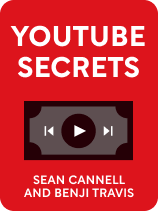

This article is an excerpt from the Shortform book guide to "YouTube Secrets" by Sean Cannell and Benji Travis. Shortform has the world's best summaries and analyses of books you should be reading.
Like this article? Sign up for a free trial here.
What’s unique about your YouTube channel? Where do good video content ideas come from? Is it possible to create quality content without fancy equipment?
According to Benji Travis and Sean Cannell, the most important thing you can do to build your YouTube business is to consistently post valuable content on your channel. They discuss how to choose a theme for your channel and how to make videos that will deliver the value your channel needs to be successful.
Keep reading to learn how to create YouTube content that’s compelling.
Create Quality YouTube Content
Travis and Cannell’s advice on how to create YouTube content covers three steps: define your channel’s value, generate ideas, and execute those ideas. Let’s take a look at each step in detail.
Define Your Channel’s Value
Travis and Cannell advise that to consistently post valuable content on your channel, you need to start with a clear vision of what unique value you intend your channel to provide.
To identify what unique value you should focus on, they suggest thinking about the things that you are both passionate about and especially good at. Maybe you have a unique message that you want to convey, or you intend to cover a subject that nobody else is posting videos about. Or maybe you’ll make videos on a subject that already has a lot of videos and viewers, but you’ve got a unique presentation style that enables you to motivate or entertain your audience in ways that other channels don’t.
| Value Innovation When Travis and Cannell advise you to make videos that are worth watching, they are basically applying the concept of value innovation to a YouTube business. In Blue Ocean Strategy, business innovation consultants W. Chan Kim and Renée Mauborgne argue that the key to success in any business is to provide enough unique value that your product creates its own niche instead of being lost in a sea of competing products that drive your profit margins to zero. To develop uniquely valuable products, Kim and Mauborgne recommend listing all the features or aspects of products in your sector that your prospective customers care about and identifying combinations of features that no one else is providing. This can help you find an uncontested niche for your product, or, in this case, your YouTube channel. |
Make Videos That Deliver Value
Once you have a clear vision of what unique value your channel provides, start planning your videos by determining what specific value each video will provide. To keep the value of your videos as high as possible, the authors recommend brainstorming many video ideas and selecting only the best ideas for video topics. The authors observe that some successful YouTubers brainstorm as many as five ideas for every video that they actually make.
Ideation
Travis and Cannell provide several tips on identifying video ideas. You can ask yourself what’s currently missing from YouTube in your topic area, and make videos that fill in these gaps in the collective knowledge base. You can also find out what viewers are searching for on YouTube by typing a partial query into YouTube’s search bar and looking at the top suggestions YouTube’s algorithm provides to complete the search terms.
Also consider making videos that relate to topics or products that are currently getting a lot of attention in the media, so you can capture some of that attention. Bear in mind, though, that to get the most out of videos on trending topics, you have to post them early in the attention cycle when interest in the topic is still building. Pulling this off requires a keen awareness of trends and a quick turnaround on making videos. This is a little easier with “tent poles”—topics that predictably draw attention around a certain time, such as annual holidays, national elections, or big sporting events.
| Generating Ideas In Tools of the Titans, Tim Ferriss offers additional insight into coming up with innovative ideas. He corroborates Travis and Cannell’s recommendation to come up with lots of ideas, because the more ideas you come up with, the more good ideas you’ll come up with, even if you reject most of them. Moreover, the more ideas you come up with, the better you’ll get at generating ideas. To get better at creating new ideas, Ferriss also recommends exposing yourself to as many new people, problems, and ideas as possible. Travis and Cannell’s suggestion to keep tabs on what people are searching for on YouTube is one way you can do this. Finally, Ferriss recommends thinking about questions that nobody else is asking because they seem obvious or silly. Often, he says, these questions end up raising important issues that no one else is addressing. If you’re the first to address these issues in a YouTube video, your video will likely get a lot of attention. This is especially pertinent to trends because, as they gather momentum, it’s easy for people to make assumptions or take things for granted. (As an example, during the housing bubble of 2008, people mistakenly assumed that the banks wouldn’t loan money to people who couldn’t pay it back.) |
Execution
Once you’ve decided what to make a video about, the authors offer a few tips on how to make the best possible video about it.
If you don’t already have videography experience (and equipment), the authors recommend recording and editing your videos with just a smartphone because this simplifies video production, allowing you to focus more on your content quality than on the technical aspects of video production.
(Shortform note: In The Lean Startup, Eric Ries asserts that the goal of any startup should be to figure out what your customers want as quickly and efficiently as possible. To that end, he recommends building minimum viable products to validate what you think you know about your customers. This provides another reason to start your channel with minimal videography equipment, because the quicker you can turn your ideas into videos and get feedback on them, the sooner you’ll be able to refine your vision and position your channel in the right niche.)
Once you start recording, Travis and Cannell recommend opening the video with a short preview of what you’re going to cover. If your viewers understand the value they can expect to get out of the video in the first few seconds, they’re more likely to stick around and watch the whole video.
Then present the main content of the video. Make sure it’s clear, well-organized, and concise—boring speeches and aimless rambling motivate viewers to click on something else.
End your video with a transition to another video. You can use YouTube’s “end cards” feature to provide a link to the next video you want viewers to watch. Try to segue into recommending the next video before alerting your viewers that you’re done presenting content in this one—if they think the video is “over” they may click on something else before they hear your recommendation. For example, instead of saying, “That’s it for today. If you liked this video consider watching [my other video]” say something like, “This is similar to what happened in [my other video]. I’ll put a link to it on the screen in case you want to check it out … .”
When you post the video, make sure the title and thumbnail clearly convey what the video is about and highlight the value it provides. If you made the video to address a topic that users are searching for, use the exact search phrase that you based it on in the video title.
| The Science of Hooking Viewers In Hooked, Nir Eyal and Ryan Hoover explain the science behind why people get hooked on social media. Their analysis provides insight into why Travis and Cannell’s recommendations are effective. According to Eyal and Hoover, social media can be habit-forming in the same way that we form other habits (whether good or bad). In this case, there are two actions that you want people to make into habits: First, clicking on your videos, and second, watching each video through to the end. If you follow Travis and Cannell’s advice, you’ll be creating three elements that trigger the execution of these two habits. The title and thumbnail of your video together are the first trigger. The more they make the viewer anticipate the reward, the more effective they’ll be. In many cases, the external trigger that your video thumbnail provides will work together with an internal trigger, such as boredom, that your video can alleviate because it’s interesting or entertaining. The first few seconds of your video need to deliver enough of a reward to reinforce the action of clicking on the thumbnail, while also creating enough anticipation of further reward to act as a trigger for the second action, namely watching the rest of the video. Finally, by ending with a transition to another video, you introduce a third trigger that prompts the viewer to repeat the action of clicking on one of your videos. The more the viewer repeats the cycle, the stronger the habit will become, and the more they’ll watch your videos. |
Exercise: Design Your YouTube Channel for Success
In this exercise, you’ll have a chance to apply Travis and Cannell’s advice to your own YouTube business.
What makes your videos unique, and how does that make them valuable to viewers? If you’re already running a YouTube channel and have a clear idea of the unique value you provide, describe it below. Otherwise, brainstorm a few ideas for the unique value that you could provide. Recall that anything you’re both good at and passionate about can be a good topic to build a channel around.

———End of Preview———
Like what you just read? Read the rest of the world's best book summary and analysis of Sean Cannell and Benji Travis's "YouTube Secrets" at Shortform.
Here's what you'll find in our full YouTube Secrets summary:
- A guide to developing a successful YouTube business model
- How to produce videos and grow your audience
- How to find and implement the most effective revenue streams






